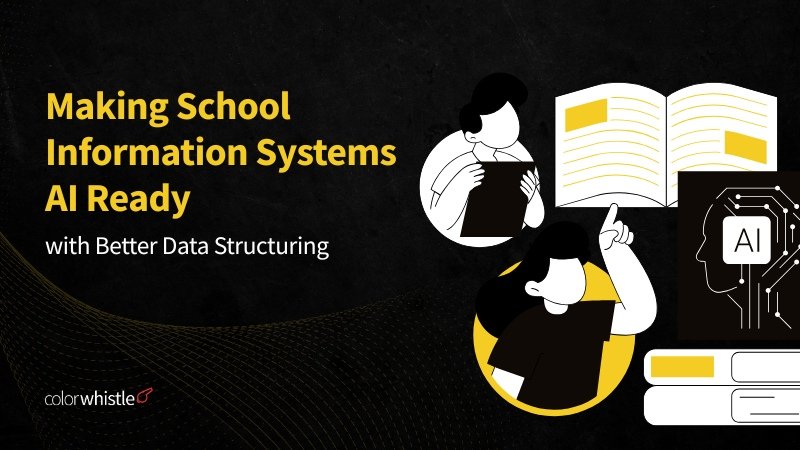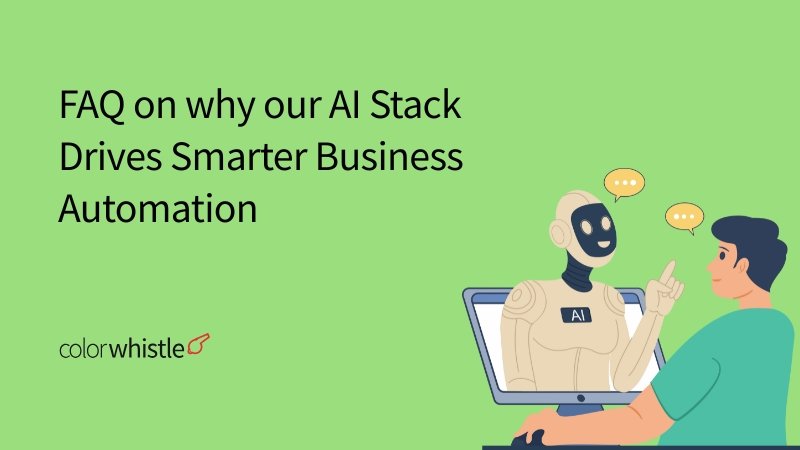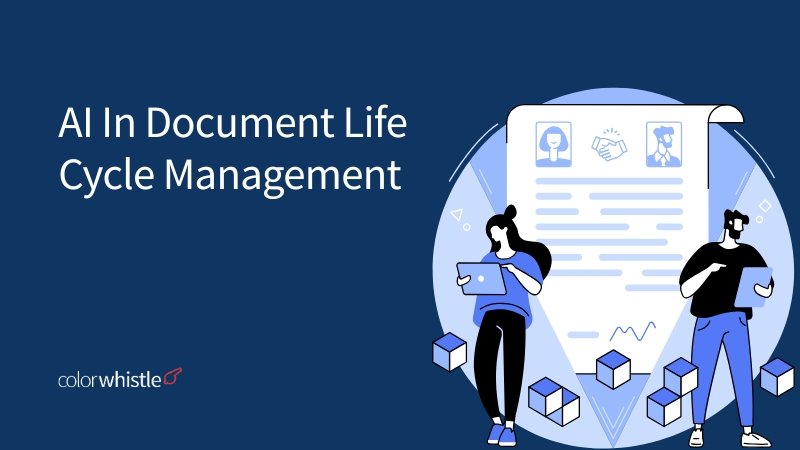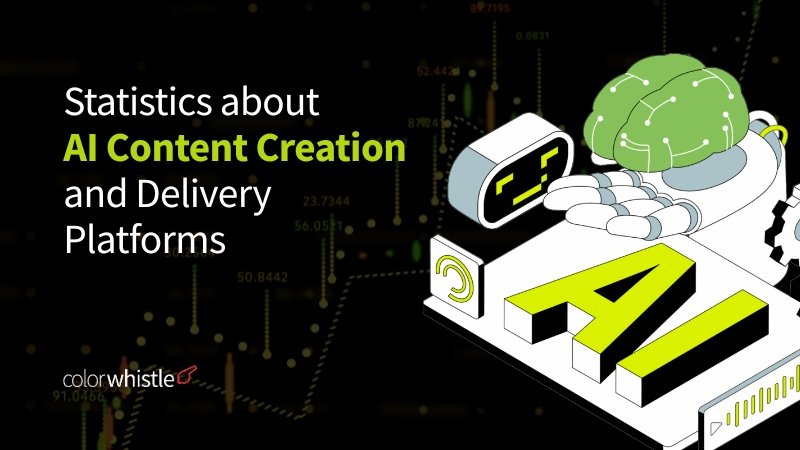Making School Information Systems AI Ready with Better Data Structuring is rapidly becoming a necessity for educational institutions looking to harness the transformative potential of artificial intelligence. As schools increasingly adopt digital platforms, the quality and structure of the data stored in School Information Systems (SIS) directly impact their ability to leverage AI for smarter decision-making, personalized learning, and proactive student support.
Data structuring forms the backbone of AI readiness in education. Well-organized datasets, built on clear relationships between entities such as students, courses, grades, and attendance enable seamless data integration and accurate analytics. The use of relational database principles like primary keys (PKs) and foreign keys (FKs) ensures that data is consistent, uniquely identifiable, and semantically meaningful.
“AI models are only as good as the data they are trained on. Clean, well-structured SIS data sets the stage for reliable predictions and insights.”
Improving data integrity and consistency within SIS systems is crucial for successful AI integration. Inconsistent or poorly structured records can introduce errors, bias, and inefficiencies into automated processes. By prioritizing robust data governance practices including validation rules, relationship mapping, and standardized documentation schools can lay a strong foundation for AI-powered tools that enhance both teaching and administration.
To further enhance these efforts, educational institutions should consider adopting education digital marketing services to effectively reach their target audience while also implementing custom education website development services. Such initiatives not only improve online visibility but also facilitate better data structuring.
Moreover, schools aiming to incorporate advanced technologies should explore the potential of artificial intelligence in education. Partnering with specialized agencies can help turn this vision into reality by offering tailored AI application development services.
The Role of School Information Systems (SIS) in Data Collection
School Information Systems (SIS) are the digital backbone of educational institutions, acting as centralized platforms for data collection and management. These systems keep track of a wide range of educational data, including student demographics, grades, attendance records, disciplinary actions, health information, and course enrollments. By gathering this information in one place, SIS platforms make it easier for academic and administrative teams to manage data effectively, allowing them to identify trends, meet regulatory requirements, and create important reports.
Key Functions of SIS Data Collection
Here are the key functions of SIS data collection:
Centralization of Records: All relevant student and school data is stored in one secure location, eliminating the need for disparate spreadsheets or paper files.
Real-Time Data Entry: Teachers and administrators can input information instantly, supporting up-to-date insights on student progress or attendance.
Data Accessibility: Authorized users can access comprehensive records at any time, which streamlines communication between departments and stakeholders.
Compliance Support: Automated collection ensures that schools can efficiently meet state and federal reporting requirements.
Importance of Accurate Data Collection
Accurate SIS data is essential for making effective decisions at all levels. Reliable information is essential for effective curriculum planning, resource allocation, intervention strategies for at-risk students, and informed policy development. For example:
A school using consistently structured attendance data can identify chronic absenteeism early, enabling targeted support interventions.
Clean and precise data also powers analytics dashboards that provide actionable insights to principals, teachers, and district leaders.
Challenges of Unstructured Legacy Data
Many schools face challenges when moving away from outdated or legacy SIS platforms. Common problems include:
- Inconsistent Formats: Historical records may have different naming conventions or missing fields.
- Duplicate Entries: Multiple versions of the same student or staff member create confusion.
- Lack of Referential Integrity: Absence of clear relationships between datasets makes comprehensive analysis difficult.
- Fragmented Storage: Records spread across multiple systems reduce visibility.
Such challenges hinder efforts to integrate new technologies or use advanced analytics. AI models rely on well-organized datasets, making unstructured legacy data a significant obstacle to fully utilizing modern educational tools. Clean SIS data not only meets current operational needs but also paves the way for AI-driven transformation in schools.
To further enhance the effectiveness of SIS platforms, integrating them with modern web solutions can be beneficial. For instance, adopting a student-centric approach in educational website design could improve user experience and accessibility to important resources. Additionally, utilizing YouTube SEO strategies tailored for EdTech can significantly boost engagement with educational video content.
Moreover, during periods when website updates are necessary or when transitioning to new platforms, activating WordPress maintenance mode could ensure a smooth process without disrupting user access.
Also Read
Issues with Unstructured Legacy Data in School Information Systems
School information systems (SIS) often struggle with the complexities of legacy data challenges. Unstructured data issues in school data systems can significantly hinder the efficiency and effectiveness of educational management and decision-making processes.
Problems Associated with Unstructured Legacy Data
- Inconsistent Formats: Data collected over different periods may follow varying formats, leading to inconsistencies that complicate data analysis and integration.
- Redundancy: Lack of a unified data structure often results in duplicate records, which can inflate database sizes and reduce performance.
- Data Silos: Isolated datasets hinder the ability to obtain a holistic view of student performance, attendance, and other critical metrics.
- Lack of Standardization: Without standardized data entry protocols, information may be incomplete or inaccurately recorded.
Impact of Poor Data Structuring on AI Readiness
Poorly structured data severely impacts AI readiness in several ways:
Reduced Quality Control: Unstructured data lacks the necessary integrity checks, leading to potential errors and inaccuracies in AI model training.
Inefficient Processing: AI algorithms require well-defined relationships among datasets. Unstructured data often necessitates extensive preprocessing, which is time-consuming and resource-intensive.
Compromised Predictive Accuracy: The absence of clear entity relationships can result in suboptimal AI models that fail to accurately predict outcomes such as student performance or dropout risks.
Risks of Using Outdated and Inconsistent Data for AI Applications
Relying on outdated and inconsistent data poses significant risks when integrating AI into school information systems:
Bias and Inequality: Historical biases embedded within legacy data can perpetuate inequalities if not properly addressed during the structuring process.
Erroneous Predictions: AI models may generate misleading insights if trained on inaccurate or incomplete datasets, potentially leading to poor decision-making.
Compliance Issues: Inconsistent data may violate regulatory standards for educational data management, resulting in legal and ethical repercussions.
Ensuring that school information systems are free from these unstructured legacy data issues is critical for unlocking the full potential of AI applications in education.
Techniques to Clean and Standardize Student and Admin Data for AI Integration
Importance of Cleaning and Standardizing Data
Ensuring that student and administrative data is clean and standardized is critical for successful AI integration in educational environments. Clean data enhances the reliability of AI models, providing a solid foundation for accurate predictions and insights. Standardized data ensures consistency across various datasets, simplifying the process of integrating different data sources within the School Information System (SIS).
Techniques for Improving Data Hygiene and Quality in SIS
1. Data Cleaning Techniques
- Duplicate Detection and Removal: Identifying and removing duplicate records to prevent anomalies in AI outputs.
- Error Correction: Rectifying typographical errors, incorrect data entries, or invalid values to maintain data integrity.
- Missing Data Handling: Implementing methods such as imputation or deletion to manage missing values effectively.
2. Standardizing Student Data
- Uniform Data Formats: Ensuring consistency in date formats, units of measurement, and other data attributes.
- Consistent Coding Systems: Utilizing standardized codes for courses, grades, attendance statuses, etc., to facilitate seamless data integration.
- Normalization: Converting different variations of data into a common format to maintain uniformity.
3. Data Validation Rules
- Set Constraints on Data Entries: Establish rules such as required fields, range limits for numerical values, and valid date ranges.
- Automated Validation Scripts: Deploy scripts that automatically check for adherence to validation rules during data entry.
4. Metadata Management
- Documenting Data Definitions: Clearly defining each data element’s meaning and usage context.
- Tracking Changes and Lineage: Keeping a log of modifications to datasets over time aids in maintaining historical accuracy.
Role of Standardized Datasets in Enhancing AI Model Accuracy
Improved Predictive Analytics: High-quality, standardized datasets enable more precise AI models that can predict student performance trends, attendance patterns, and potential dropout risks with greater accuracy.
Enhanced Decision Support: Consistent datasets allow for better decision-making tools that can provide actionable insights based on reliable data.
Personalized Learning Recommendations: AI systems leveraging well-structured data can offer tailored learning pathways suited to individual student needs, promoting better educational outcomes.
By adopting meticulous data cleaning techniques and standardizing student information, educational institutions can significantly improve their School Information Systems’ readiness for advanced AI applications.
Steps to Make School Data Usable for AI Predictions
Leveraging SIS Data for AI Predictions in Education
School Information Systems (SIS) contain a wealth of data that can be used for AI predictions in education. To make the most of this data, there are several important steps that need to be taken to ensure it is suitable for predictive analysis. These steps are designed to create a strong foundation where the integrity, quality, and structure of the data are carefully maintained.
1. Data Cleaning and Preparation
Start by cleaning the SIS data to eliminate any inaccuracies, duplicates, and irrelevant information. This step ensures that the dataset is free from noise, which can hinder AI model performance.
2. Data Structuring and Standardization
Organize the data into a structured format with clear relationships between different entities like students, courses, grades, and attendance records. Use primary keys (PKs) and foreign keys (FKs) to establish relational context within the dataset.
3. Feature Engineering
Identify and create relevant features that will help the AI models make accurate predictions. For instance, attendance rates, assignment scores, and participation levels can be significant predictors of student performance.
4. Data Splitting
Divide the dataset into training and testing sets to evaluate the AI model’s accuracy without overfitting.
5. Model Training and Validation
Train machine learning models on the prepared data and validate their performance using metrics such as accuracy, precision, recall, and F1 score.
6. Continuous Monitoring and Updating
Regularly monitor the model’s predictions against actual outcomes and update the datasets to reflect new information or changes in student behavior patterns.
Examples of Predictive Analytics Applications in Schools
AI predictions in education open up numerous possibilities for enhancing educational outcomes:
- Attendance Prediction: By analyzing historical attendance data, schools can predict future absenteeism trends. This allows educators to proactively address potential issues before they become significant problems.
- Performance Prediction: Leveraging data on past academic performance enables AI models to predict future grades or identify students at risk of underperforming. Educators can then tailor interventions to support these students.
- Dropout Risk Analysis: Predictive analytics can assess various factors contributing to dropout risks such as socioeconomic status, engagement levels, and academic history. Schools can implement targeted support programs to reduce dropout rates by addressing these risks early.
By following these steps and utilizing predictive analytics applications, schools can transform raw SIS data into actionable insights that drive better educational outcomes through informed decision-making.
AI Tools That Benefit from Clean School Information System Data
Clean and well-structured data from School Information Systems (SIS) is the backbone for a range of AI tools that can revolutionize educational environments. Here’s how various AI tools leverage clean SIS data to enhance educational outcomes:
Personalized Learning Recommendations
AI-driven personalized learning systems can analyze student performance data, learning styles, and preferences to tailor educational content.
Example: An AI tool might recommend specific exercises or resources to students who are struggling in particular subjects, thereby providing targeted support.
Benefit: This personalized approach helps in addressing individual learning needs, improving student engagement, and academic success.
Administrative Automation
Administrative tasks often consume significant time and resources. AI can automate these processes by utilizing structured SIS data.
Example: Automation tools can handle scheduling, attendance tracking, and report generation efficiently.
Benefit: Administrators and teachers have more time to focus on core educational activities rather than mundane administrative tasks.
Decision Support Systems
Decision support systems (DSS) powered by AI can offer valuable insights derived from historical and real-time data.
Example: A DSS might analyze trends in student attendance and performance to identify potential dropout risks or areas needing intervention.
Benefit: These insights enable proactive decision-making, ensuring timely interventions that can mitigate issues before they escalate.
Predictive Analytics
Predictive analytics tools use historical data to forecast future trends and outcomes.
Example: Predicting which students are at risk of falling behind based on their past performance and attendance records.
Benefit: Schools can implement preventive measures early, such as additional tutoring or counseling, to help students stay on track.
Enhanced Communication Channels
AI-powered communication tools leverage clean SIS data to streamline interactions between teachers, students, and parents.
Example: Automated alerts regarding grades, attendance issues, or upcoming events sent directly to parents’ phones.
Benefit: Keeps all stakeholders informed and engaged, fostering a supportive educational environment.
Incorporating these AI tools into the education system depends heavily on the quality of data within the SIS. Clean, structured data enhances the accuracy and efficacy of these tools, leading to better educational outcomes. For instance, AI engineering schools are already experiencing the benefits of customized AI solutions integrated with no-code and low-code platforms. Moreover, AI marketing tools are transforming EdTech growth by driving engagement and innovation in education.
Also Read
Making School Information Systems AI-Ready with Better Data Structuring
To fully harness the power of AI in education, we need a solid foundation well-organized, trustworthy data within school information systems. Clean, interconnected data not only drives more precise AI models but also guarantees openness, uniformity, and confidence in automated insights that can influence educational results.
Key reasons to prioritize better data structuring for making SIS AI-ready:
- Improved Data Integrity: Primary keys and foreign keys clarify relationships between students, courses, grades, and other entities, reducing errors and ambiguity.
- Enhanced AI Capability: Structured datasets support advanced analytics, from predicting student success to automating administrative workflows.
- Stronger Data Governance: Clear schema definitions and robust metadata management lay the groundwork for responsible AI adoption and ethical decision-making.
“The quality of your AI outputs depends directly on the structure and governance of your inputs.”
Educational institutions are encouraged to invest in ongoing data hygiene initiatives, enforce relational constraints, and adopt best practices in metadata management. By prioritizing these steps now, schools position themselves to leverage transformative AI tools and deliver more personalized, efficient educational experiences.
Call to action:
Start reviewing your existing SIS data architecture. Engage stakeholders across IT, administration, and teaching to champion better data structuring. This commitment is key to making school information systems truly AI ready setting the stage for smarter, evidence-driven education.
FAQs (Frequently Asked Questions)
Why is data structuring important for making School Information Systems (SIS) AI-ready?
Data structuring is crucial for making School Information Systems AI ready because it ensures data integrity and consistency, which are foundational for effective AI integration. Properly structured data allows AI models to accurately analyze educational information, leading to better decision-making and predictive analytics in schools.
What challenges do schools face with unstructured legacy data in their SIS?
Schools often encounter issues such as poor data quality, inconsistencies, and outdated information when dealing with unstructured legacy data in their SIS. These challenges hinder AI readiness by reducing the accuracy of AI applications and limiting the effectiveness of predictive analytics and personalized learning tools.
What techniques can be used to clean and standardize student and administrative data for AI integration?
Techniques for cleaning and standardizing school data include data validation, removing duplicates, correcting errors, and applying consistent formatting standards. Implementing rigorous education data hygiene practices enhances data quality, which improves the accuracy of AI models and supports reliable predictions within School Information Systems.
How can School Information System data be utilized for AI predictions in education?
SIS data can be leveraged for AI predictions by analyzing attendance records, student performance metrics, and dropout risk factors. These predictive analytics applications help educators identify at-risk students, personalize learning experiences, and optimize resource allocation to improve educational outcomes.
Which AI tools benefit most from clean SIS data in educational settings?
AI tools such as personalized learning recommendation systems, administrative automation platforms, and decision support systems benefit significantly from clean SIS data. High-quality structured data enables these tools to function effectively, enhancing both teaching strategies and operational efficiencies within schools.
What steps should educational institutions take to prioritize data governance for better SIS AI readiness?
Educational institutions should establish robust data governance frameworks that include policies for data collection, cleaning, standardization, security, and privacy. Prioritizing these practices ensures that SIS data remains accurate and consistent over time, thereby facilitating successful AI integration and maximizing the benefits of advanced educational technologies.
What’s Next?
Now that you’ve had the chance to explore our blog, it’s time to take the next step and see what opportunities await!





